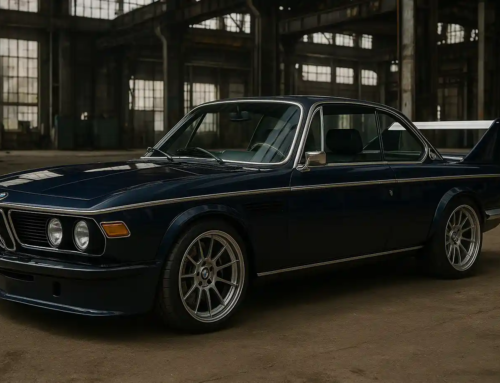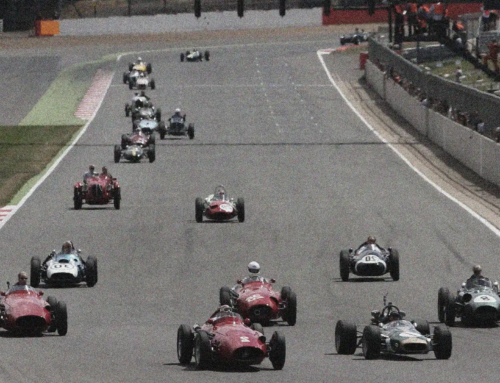Having been born and raised in Southern Africa and cutting my teeth on the internal combustion engine, I guess I would call myself a ‘pistonhead’! I raced them, tuned them, stripped and rebuilt them. I’ve done everything short of marrying them!
By Glyn Hall
A few years back when I arrived in the UK, I bought myself a runabout, a Renault Twingo 2. It was a low mileage example, still under warranty, had a service plan and was a bargain that I really enjoyed. With speed cameras everywhere that are equipped with licence plate recognition, one tends to be a very careful driver here. The cameras are capable of flagging the authorities on lack of insurance (compulsory), named insured drivers, annual road worthy certified (MOT) as well as valid driving licence holders, one tends to be more attentive to the rules of the road than in SA!
My next car was a Twingo 3 which was rather underpowered! On one service I was given an electric vehicle (EV), a Renault Zoé, as a loan car while my car was being worked on. I was totally blown away by the torque from a standing start which was constant all the way past the speed limit.
My initial thoughts were around the myriad of myths that I’d been fed, lack of range, battery replacement costs, length of time to recharge, lack of charging points, price of the EV, etc. etc.
I started researching EV’s seriously – noting how much I drove my Twingo and the length of trips and discovered that most of my trips were under 50kms. Range wise this was what I used as my guide. The 2016 Renault Zoé that I bought came with a 22kWh battery that is good for 90 to 100 miles per 100% charge in the summer (144 to 160 km). The late 2017 Renault Zoé has a 44kWh battery which is basically double the range. In the winter the range drops to around 75%.
I discovered that there are around 20 000 public charging points in the UK and that number is expected to be 5 times that by 2020! There are a couple of things that one should know about charge points. First there are different output chargers. The most basic is where you simply plug into your wall socket at home – this will let you charge your EV, but slowly, around 12 to 14 hours. Next up is a 3.5kWh charger that takes around 8 hours to fully charge from near 0. These are usually what people get at home or there are a number of public units which let you charge ‘free of charge’ and both these chargers are classed as ‘slow’ chargers.
Next size up is the ‘fast’ or ‘accelerated’ chargers, 7kWh (around 3 hours for a full charge) which is also a home charger but is quite common commercially and a 22kWh charger that is found quite widely in the UK. The Co-op supermarkets in my area (6) all have 2x 22kWh charge points and you are billed via your credit/debit card at 25 pence per kWh. (around R150 for 500kms) They take 1 to 2 hours to fully charge. I have a 7kWh Rolec charger at home which was subsidised, including installation, by a government grant, and the electricity for 500kms costs me around R100. A tank of fuel for the same range would cost, in the UK, around R750!
Once you get onto the motorways you find ‘rapid’ or ‘superchargers’ which can give you around 80% charge in 30 minutes. The EV is supplied with a cable and plugs – the European standard is the type 2 (aka Mennekes) plug where the Asian standard is Type 1. There are several other types of plug used by Tesla and other brands.
The anticipated 8 year battery life turned out to be unfounded and is now being reported at around 20 years before requiring replacement. However, Renault offers a battery lease scheme that will replace your battery if it will not hold more than 85% charge and included in this lease is AA membership which entitles you to a tow in to the nearest charge point if you accidently ran out of power.
The price of an EV in the UK is enhanced by the fact that EV buyers are entitled to a government grant of around £4500 (R80 000) as well as a further grant for a home charge point. If you buy a vehicle like mine, a Renault Zoé, you can buy the batteries outright or on lease. If you buy outright you don’t get AA membership or any battery cover. The price of the replacement battery is also around R80 000 (which is added onto the basic price without battery lease).
The interesting thing is the new price of EV has remained fairly static though sales have increased each year. 2nd hand price has been fairly low but as the popularity and acceptance has grown, so has the second hand price increased. In the last year the price of 2nd hand EV’s has increased by between 30% and 40%. Many EV’s have been bought on lease and are traded in after 2 or so years and are low mileage. I picked up my Renault Zoé just before the price started going up and got it for half retail price with 9000 km on it with 2 years manufacturer’s warranty left.
Driving an EV requires adopting a different driving style, something older petrol heads will find hard to grasp (you can’t teach an old dog new tricks!). When you go downhill you take your foot off the throttle and while your speed is maintained the EV is in regenerative mode and the battery is charging. For instance I find on a trip to and from my nearest supermarket is 6.2 miles (10kms) but the amount of range I’ve used on my display is under 5 miles. Whilst I stated above that a full summer charge was 100% and 90 to 100 miles (145 to 160kms) with regenerative charging I often achieve over 110 miles (177kms) on a charge.
Where it becomes tricky is when you are driving on a long distant motorways at constant speeds – your range is definitely shorter, even driving in ECO mode. (ECO mode restricts the top speed to 60 mph (100 km/h) and acceleration milder than non-Eco). You can ‘kick down’ by depressing the throttle to the floor, similar to driving an automatic vehicle changes down, but in this case the ECO mode is overridden. Distance driving on a motorway requires planning but fortunately there are plenty of superfast charge points. Another ‘trick’ one learns is to switch on the remote ‘conditioning’ mode (the heater) in winter to warm up your EV whilst it is charging shortly before you complete charging to drive to work etc. The warmth generated also warms up the batteries and that increases the range as well as clearing any frost or snow from the windows if parked outside.
Currently South Africa has a long way to go to get near the first world countries in infrastructure required to support EV’s. The UK has set a cut-off date for ceasing of sale of the internal combustion engines by 2040 and the rest of the first world appears to be following suit.






Leave A Comment